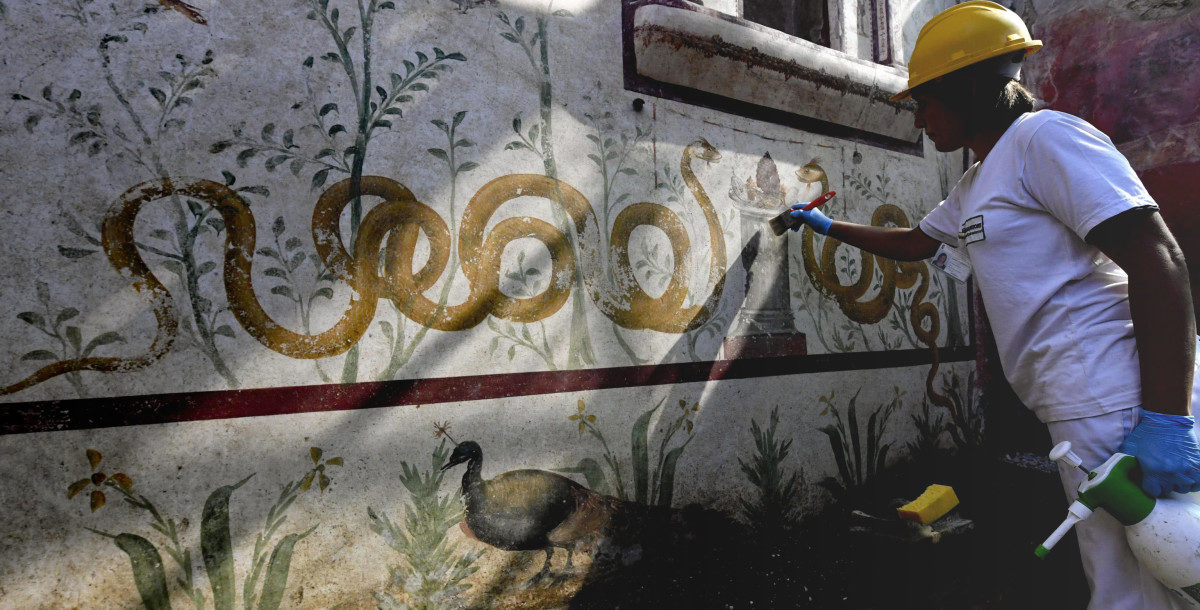
© Ciro Fusco/ANSA/AP PhotoAn archeologist working on a fresco in a house discovered during excavation works in Pompeii, Italy.
Archaeologists have discovered an elaborate, perfectly preserved shrine in the wall of a house in
Pompeii, the ancient Roman city on Italy's western coast that was destroyed nearly 2,000 years ago by the deadly eruption of Mount Vesuvius.
As many as 30,000 people are believed to have died in that famous
natural disaster in A.D. 79, many of them killed instantaneously as they tried to escape or shield themselves from the deadly volcanic flow.
The Roman writer Pliny the Younger watched the disaster from a distance, and
described it in detail in letters found in the 16th century. As he tells it, the cloud of rock and gas "shot up to a great height in the form of a very tall trunk, which spread itself out at the top into a sort of branches," casting the towns around it, including Pompeii and Herculaneum, into shadow as dark as night.


Comment: It's not clear how olive pits constitute an olive grove, but, the claim for world's oldest use of olives continues as Smithsonian magazine reports: See also: